A DIC-Based Study on Compressive Responses of Concrete after Exposure to Elevated Temperatures
Abstract
1. Introduction
2. Experimental Investigations
2.1. Test Specimens
2.2. Heating Procedure and Furnace
2.3. Test Setup and Procedure
2.4. DIC Principles
3. Experimental Results
3.1. Physical Properties of Concrete after Exposure to High Temperatures
3.2. Mechanical Properties of Concrete after Exposure to High Temperatures
3.2.1. Failure Modes
3.2.2. The Results of the DIC Method
3.2.3. Residual Compressive Strength
3.2.4. The Effect of Temperature on the Elastic Modulus
4. Conclusions
- Concrete with different w/c ratios present similar colors and cracking when exposed to the same temperature. The deterioration of concrete performance occurs after exposure to 400 °C or above. After heating to the same temperature, the specimens with low w/c ratio were easy to crack, especially beyond 400 °C. As for the specimens with the same w/c ratio, with a temperature increase, concrete cracked at the early loading stage.
- The residual compressive strength at 200 °C still retained about 85% of the original unheated value, however, the values at 400 and 600 °C reduced to 75% and 45% on average, respectively. The degeneration of compressive strength mainly occurred between 400 °C and 600 °C. The decrease of compressive strength in this temperature range accounted for more than 50% of the total decrease. The effect of the w/c ratio on compressive strength was most obvious at 600 °C. The effect of elevated temperature on the elastic modulus of concrete was more obvious than that on the compressive strength. After heating to 600 °C, the decreased value of elastic modulus was about 80% of the control specimen.
- In this research, the average error between the result of DIC technology and YHD displacement meter was about 14%. However, from Figure 8 we can observe that the DIC technology and YHD displacement meter had a good agreement, which suggests that DIC technology was an accurate and efficient measurement tool for monitoring displacement and strain fields during the whole loading process. DIC technology can obtain multi-direction field strains on concrete surfaces, which is extremely difficult to obtain by using traditional methods. The results of DIC give an insight on how the stresses acted on concrete during the entire loading process.
Author Contributions
Funding
Acknowledgments
Conflicts of Interest
References
- Arioz, O. Effects of elevated temperatures on properties of concrete. Fire Safety J. 2007, 42. [Google Scholar] [CrossRef]
- Khoury, G.A. Effect of fire on concrete and concrete structures. Progress Struct. Eng. Mater. 2010, 2, 429–447. [Google Scholar] [CrossRef]
- Ali, F.; Nadjai, A.; Silcock, G.; Abu-Tair, A. Outcomes of a major research on fire resistance of concrete columns. Fire Safety J. 2004, 39, 433–445. [Google Scholar] [CrossRef]
- Zeng, L.; Seyed, M.P.; Kong, Q.Z.; Huo, L.S.; Ing, L.; Song, G.B. Bond slip detection of concrete-encased composite structure using shear wave based active sensing approach. Smart Mater. Struct. 2015, 24, 125026. [Google Scholar] [CrossRef]
- Xiao, Y.F.; Zeng, L.; Cui, Z.K.; Jin, S.Q.; Chen, Y.G. Experimental and analytical performance evaluation of steel beam to concrete-encased composite column with unsymmetrical steel section joints. Steel Compos. Struct. 2017, 23, 17–29. [Google Scholar] [CrossRef]
- Xiao, J.; Konig, G. Study on concrete at high temperature in China--an overview. Fire Safety J. 2004, 39, 89–103. [Google Scholar] [CrossRef]
- Zeng, L.; Xiao, Y.F.; Chen, Y.G.; Jin, S.Q.; Xie, W.; Li, X.J. Evaluation of Concrete-Encased Steel Frame-Reinforced Concrete Core Tube Buildings Based on Dynamic Characteristics. Appl. Sci. 2017, 7, 314. [Google Scholar] [CrossRef]
- Zeng, L.; Ren, W.T.; Zou, Z.T. Experimental study on seismic behavior of frame structures composed of concrete encased columns with L-shaped steel section and steel beams. Earthq. Struct. 2019, 16, 97–107. [Google Scholar]
- Ma, Q.M.; Guo, R.X.; Zhao, Z.M.; Lin, Z.W.; He, K.H. Mechanical properties of concrete at high temperature—A review. Const. Building Mater. 2015, 93, 371–383. [Google Scholar] [CrossRef]
- Novak, J.; Kohoutkova, A. Mechanical properties of concrete composites subject to elevated temperature. Fire Safety J. 2018, 95, 66–76. [Google Scholar] [CrossRef]
- Zhai, Y.; Li, Y.B.; Li, Y.; Jiang, W.Q.; Liu, X.Y. Research on the Impact Loading and Energy Dissipation of Concrete after Elevated Temperature under Different Heating Gradients and Cooling Methods. Materials 2018, 11, 1651. [Google Scholar] [CrossRef] [PubMed]
- Zeng, L.; Xiao, Y.F.; Chen, J.; Chen, Y.G. Quasi-Static Cyclic Test on a Concrete-Encased Frame-Reinforced Concrete Tube Building Model. Shock Vib. 2018, 6, 1–14. [Google Scholar] [CrossRef]
- Liang, X.W.; Wu, C.Q.; Yang, Y.K.; Li, Z.X. Experimental study on ultra-high performance concrete with high fire resistance under simultaneous effect of elevated temperature and impact loading. Cement Concr. Compos. 2019, 98, 29–38. [Google Scholar] [CrossRef]
- Ercolani, G.; Ortega, N.F.; Priano, C.; Senas, L. Physical-mechanical behavior of concretes exposed to high temperatures and different cooling systems. Struct. Concr. 2017, 18, 487–495. [Google Scholar] [CrossRef]
- Manita, P.; Sideris, K.K.; Savva, A. Influence of elevated temperatures on the mechanical properties of blended cement concretes prepared with limestone and siliceous aggregates. Cem. Concr. Compos. 2005, 27, 239–248. [Google Scholar]
- Cheng, F.P.; Kodur, V.K.R.; Wang, T.C. Stress-Strain Curves for High Strength Concrete at Elevated Temperatures. J. Mater. Civil Eng. 2004, 16, 84–90. [Google Scholar] [CrossRef]
- Chang, Y.F.; Chen, Y.H.; Sheu, M.S.; Yao, G.C. Residual stress–strain relationship for concrete after exposure to high temperatures. Cem. Concr. Res. 2006, 36, 1999–2005. [Google Scholar] [CrossRef]
- De Wilder, K.; Lava, P.; Debruyne, D.; Wang, Y.; De Roeck, G.; Vandewalle, L. Experimental investigation on the shear capacity of prestressed concrete beams using digital image correlation. Eng. Struct. 2015, 82, 82–92. [Google Scholar] [CrossRef]
- Gencturk, B.; Hossain, K.; Kapadia, A.; Labib, E.; Mo, Y.L. Use of digital image correlation technique in full-scale testing of prestressed concrete structures. Measurement 2014, 47, 505–515. [Google Scholar] [CrossRef]
- Wang, Y.H.; Jiang, J.H.; Wanintrudal, C.; Du, C.; Zhou, D.; Smith, L.M.; Yang, L.X. Whole field sheet-metal tensile test using digital image correlation. Exp. Tech. 2010, 54–59. [Google Scholar] [CrossRef]
- Jiang, J.W.; Ni, F.J.; Dong, Q.; Zhao, Y.J.; Xu, K. Fatigue Damage Model of Stone Matrix Asphalt with Polymer Modified Binder Based on Tensile Strain Evolution and Residual Strength Degradation Using Digital Image Correlation Methods. Measurement 2018, 123, 30–38. [Google Scholar] [CrossRef]
- Srikar, G.; Anand, G.; Prakash, S.S. A Study on Residual Compression Behavior of Structural Fiber Reinforced Concrete Exposed to Moderate Temperature Using Digital Image Correlation. Inter. J. Concr. Struct Mater 2016, 10, 75–85. [Google Scholar] [CrossRef]
- Bilotta, A.; Ceroni, F.; Lignola, G.P.; Prota, A. Use of DIC technique for investigating the behavior of FRCM materials for strengthening masonry elements. Compos. Part B 2017, 129, 251–270. [Google Scholar] [CrossRef]
- European Standard, Eurocode 2, Design of Concrete Structures, Part 1-2. General Rules Struct. Fire Design 2004, 1992.
- JGJ/T 240-2011. Specification for Mix Proportions Design of Ordinary Concrete; Ministry of Construction of the People’s Republic of China: Beijing, China, 2011. (In Chinese)
- GB/T 50081-2002. Standard for Test Method of Mechanical Properties on Ordinary Concrete; Ministry of Construction of the People’s Republic of China: Beijing, China, 2002. (In Chinese)
- Peters, W.H. Digital imaging technique in experimental stress analysis. Opt Eng 1982, 21, 427–431. [Google Scholar] [CrossRef]
- Yamaguchi, I. Speckle Displacement and Decorrelation in the Diffraction and Image Fields for Small Object Deformation. Opt. Acta Inter. J. Opt. 1981, 28, 1359–1376. [Google Scholar] [CrossRef]
- Sutton, M.A.; Cheng, M.Q.; Peters, W.H.; Chao, Y.J.; McNeill, S.R. Application of an optimized digital correlation method to planar deformation analysis. Image Vision Comput. 1986, 4, 143–150. [Google Scholar] [CrossRef]
- Hua, T.; Xie, H.M.; Wang, S.M.; Hu, Z.X.; Chen, P.W.; Zhang, Q.M. Evaluation of the quality of a speckle pattern in the digital image correlation method by mean subset fluctuation. Opt. Laser Tech. 2011, 43, 9–13. [Google Scholar] [CrossRef]
- Sutton, M.A.; Yan, J.H.; Tiwari, V.; Schreier, H.M.; Ortru, J. The effect of out-of-plane motion on 2D and 3D digital image correlation measurements. Opt. Lasers Eng. 2008, 46, 746–757. [Google Scholar] [CrossRef]
- Sutton, M.A.; Hild, F. Recent Advances and Perspectives in Digital Image Correlation. Exp. Mech. 2015, 55, 1–8. [Google Scholar] [CrossRef]
- Pan, B.; Qian, K.; Xie, H.M.; Asundi, A. Two-dimensional digital image correlation for in-plane displacement and strain measurement: A review. Meas. Sci. Tech. 2009, 20, 062001. [Google Scholar] [CrossRef]
- Tong, W. An Evaluation of Digital Image Correlation Criteria for Strain Mapping Applications. Strain 2005, 41, 167–175. [Google Scholar] [CrossRef]
- Pan, B.; Xie, H.; Wang, Z. Equivalence of digital image correlation criteria for pattern matching. Appl. Opt. 2010, 49, 5501–5509. [Google Scholar] [CrossRef] [PubMed]
- Huo, J.S.; Wang, P.; Yu, Q. Effect of water-cement ratio on mechanical behavior of concrete at elevated temperatures. J. Safety Env. 2013, 13, 199–206. [Google Scholar]
- Mindeguia, J.C.; Hélène, C.; Pimienta, P.; Borderie, C.L. Experimental discussion on the mechanisms behind the fire spalling of concrete. Fire Mater. 2015, 39, 619–635. [Google Scholar] [CrossRef]
- Fu, Y.F.; Wong, Y.L.; Poon, C.S.; Tang, C.A.; Lin, P. Experimental study of micro/macro crack development and stress–strain relations of cement-based composite materials at elevated temperatures. Cem. Concr. Res. 2004, 34, 789–797. [Google Scholar] [CrossRef]
- Fu, Y.F.; Wong, Y.L.; Tang, C.A.; Poon, C.S. Thermal induced stress and associated cracking in cement-based composite at elevated temperatures––Part II: Thermal cracking around multiple inclusions. Cem. Concr. Compos. 2004, 26, 113–126. [Google Scholar] [CrossRef]
- Behnood, A.; Ghandehari, M. Comparison of compressive and splitting tensile strength of high-strength concrete with and without polypropylene fibers heated to high temperatures. Fire Safety 2009, 44, 1015–1022. [Google Scholar] [CrossRef]
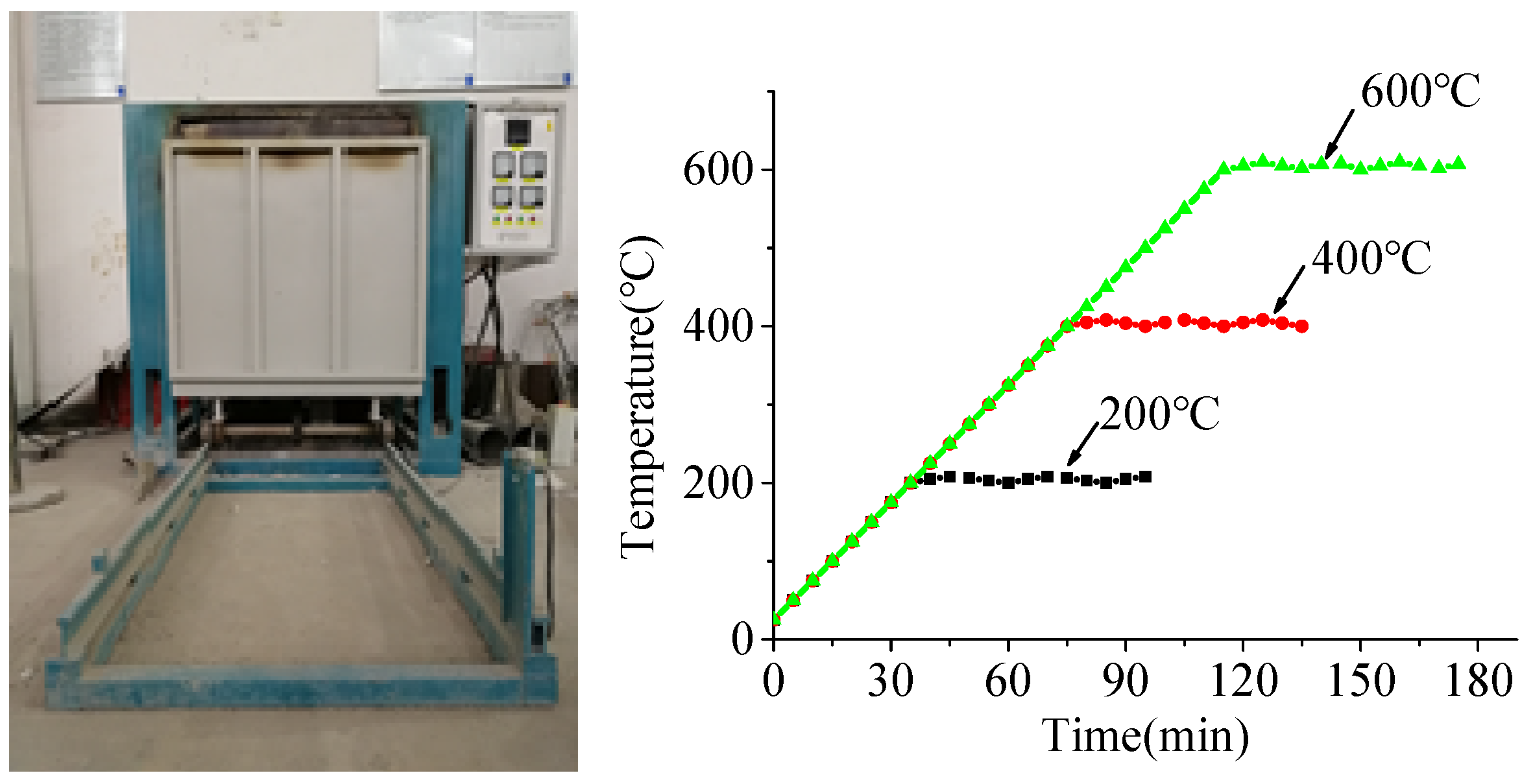
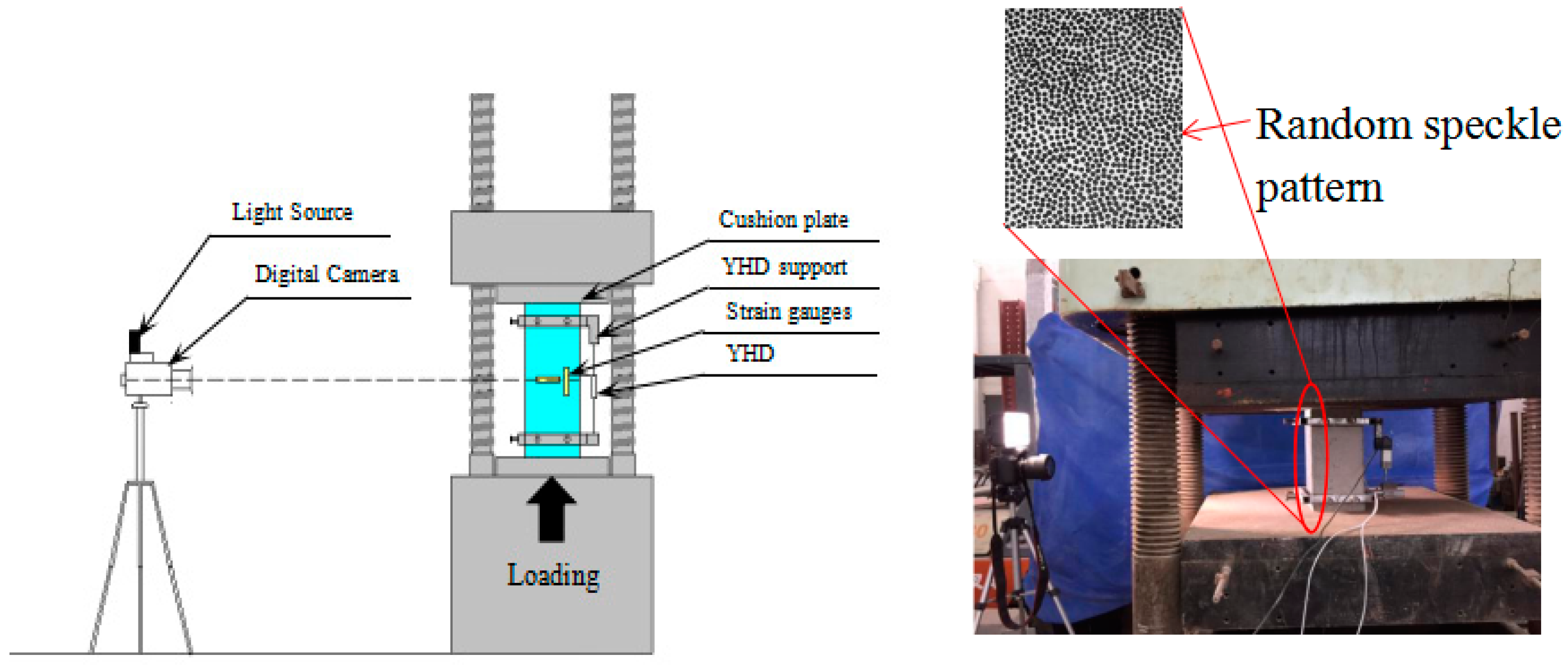
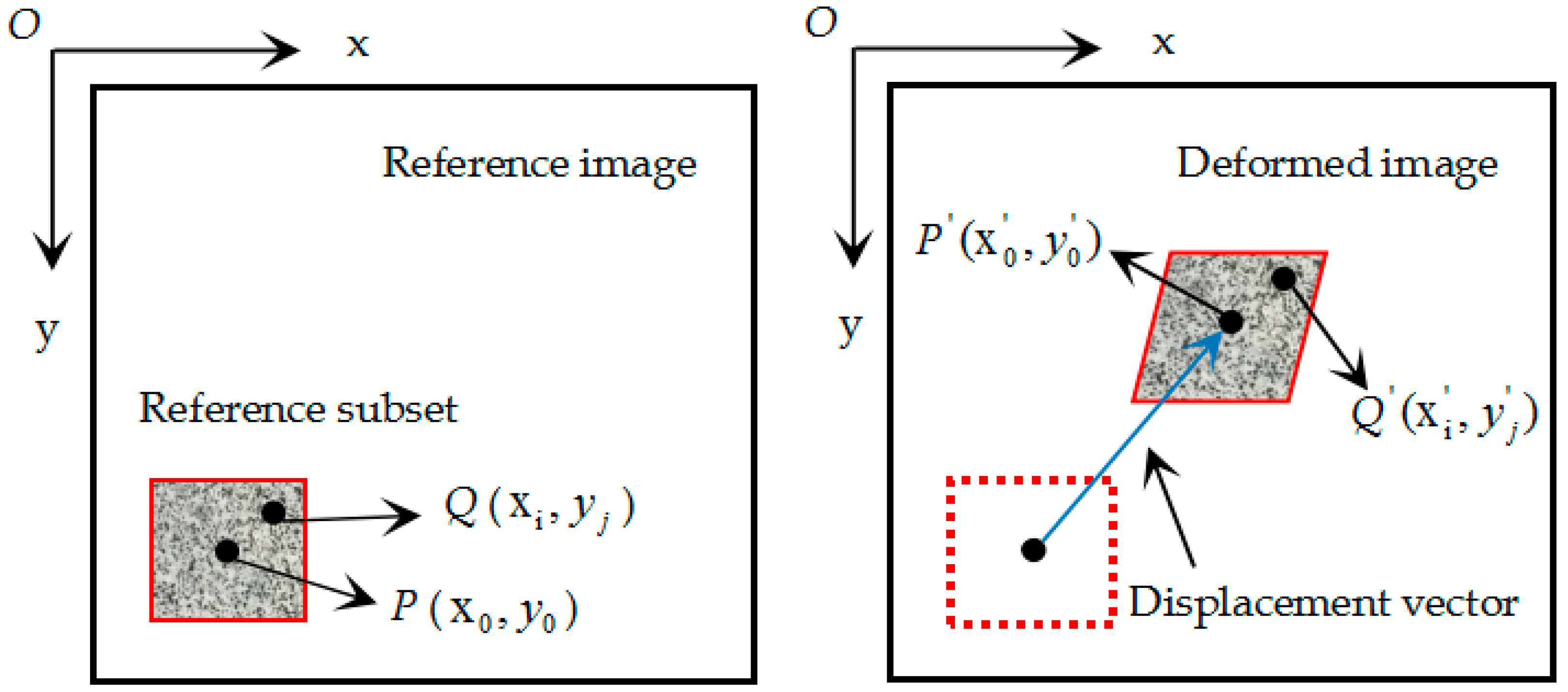
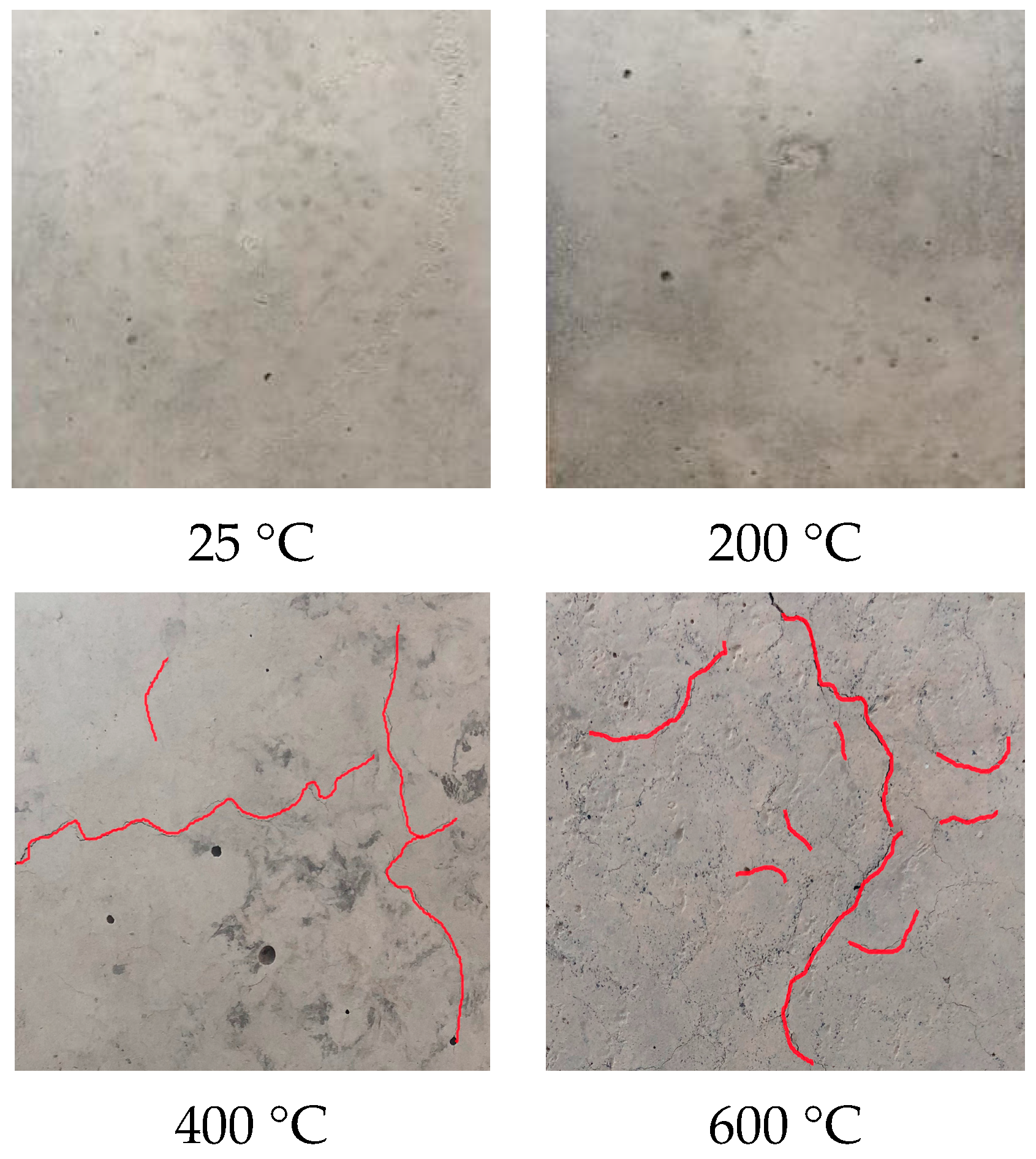
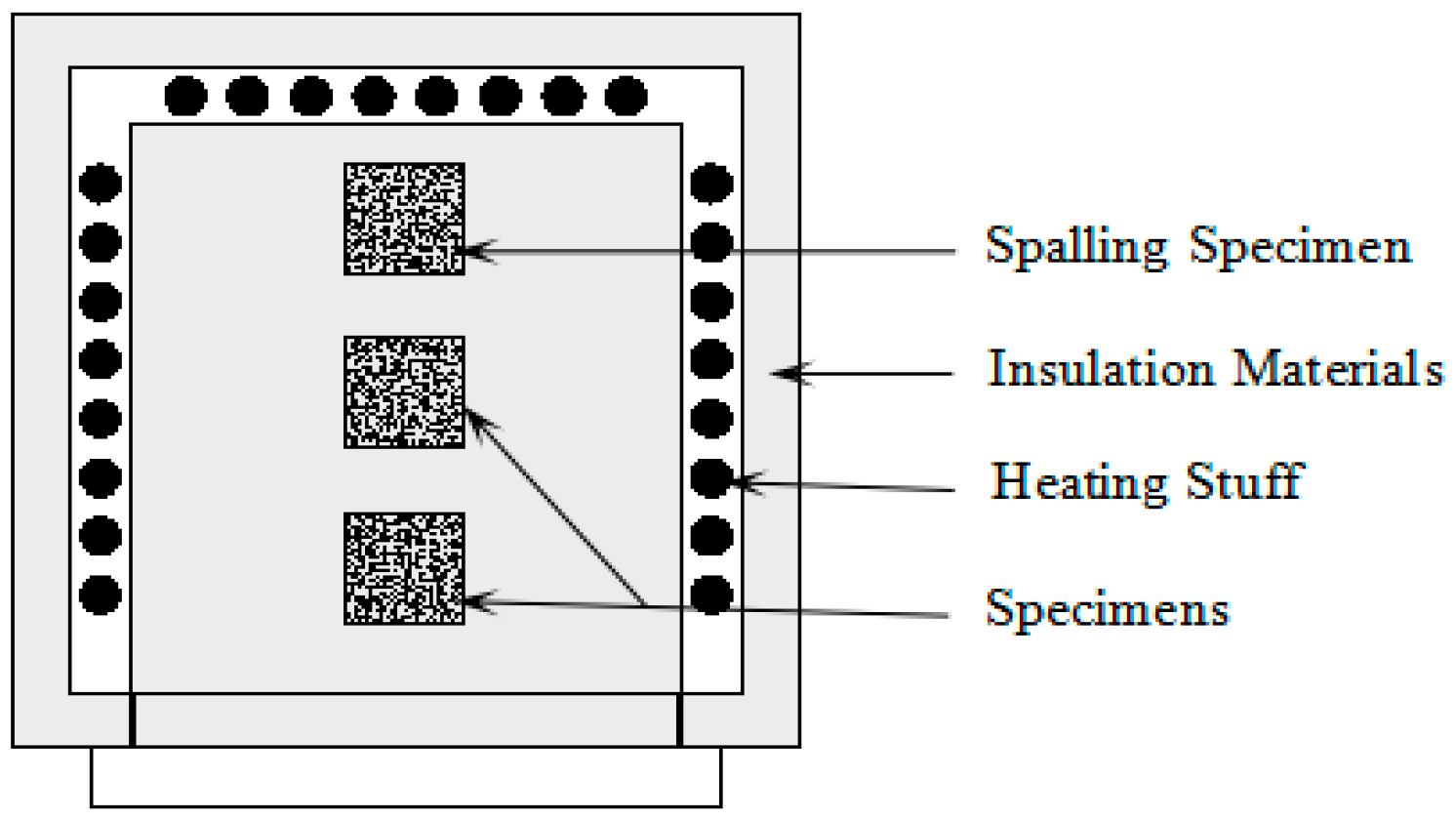
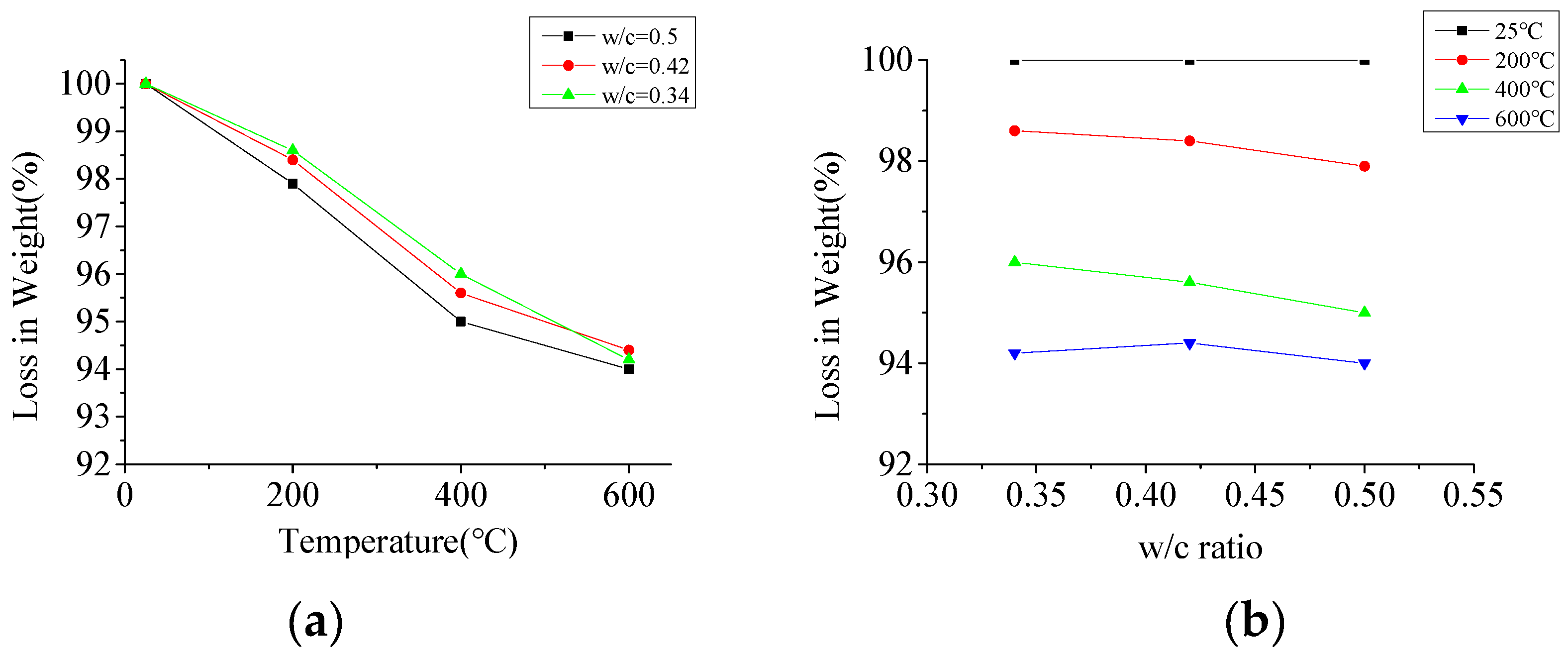
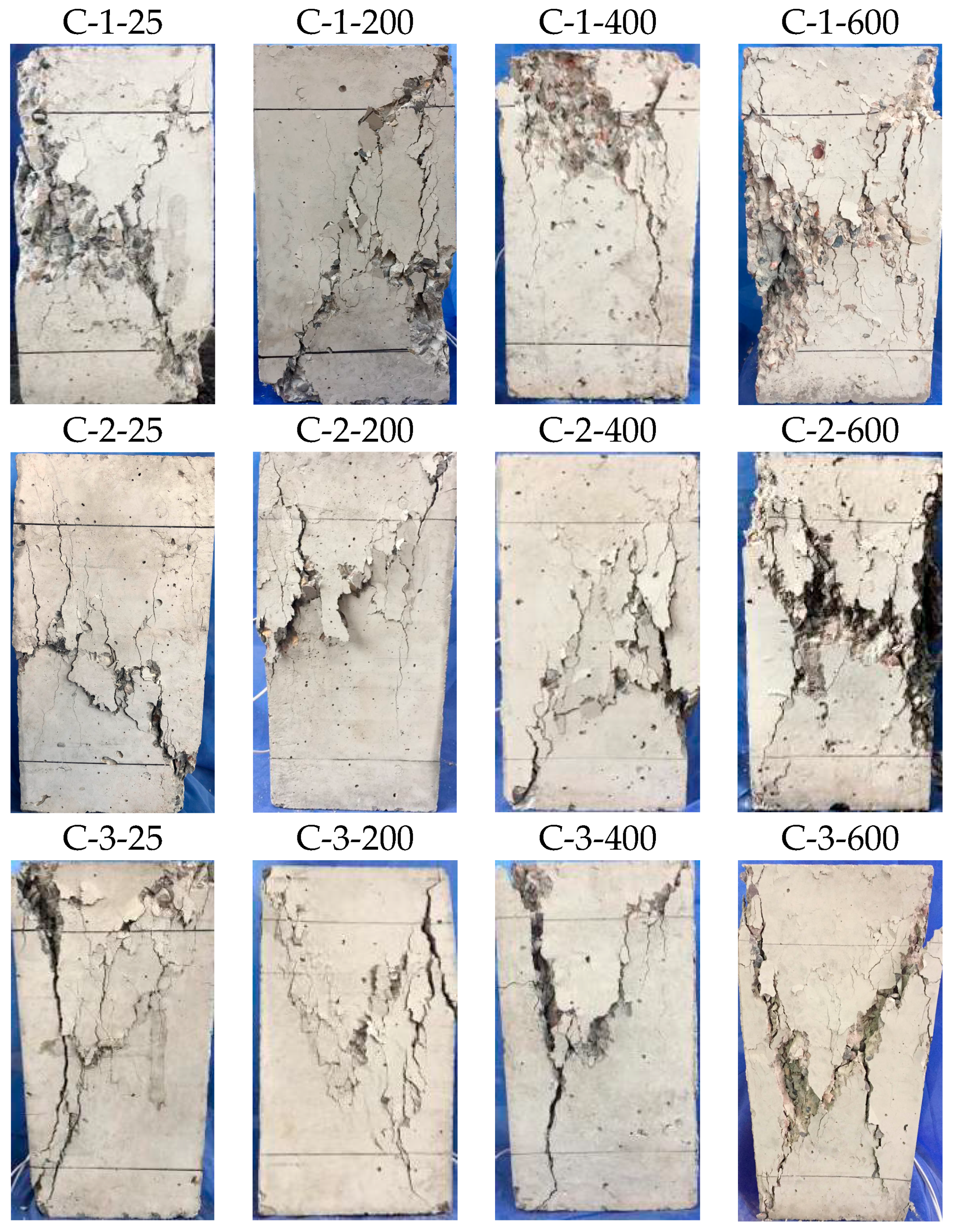
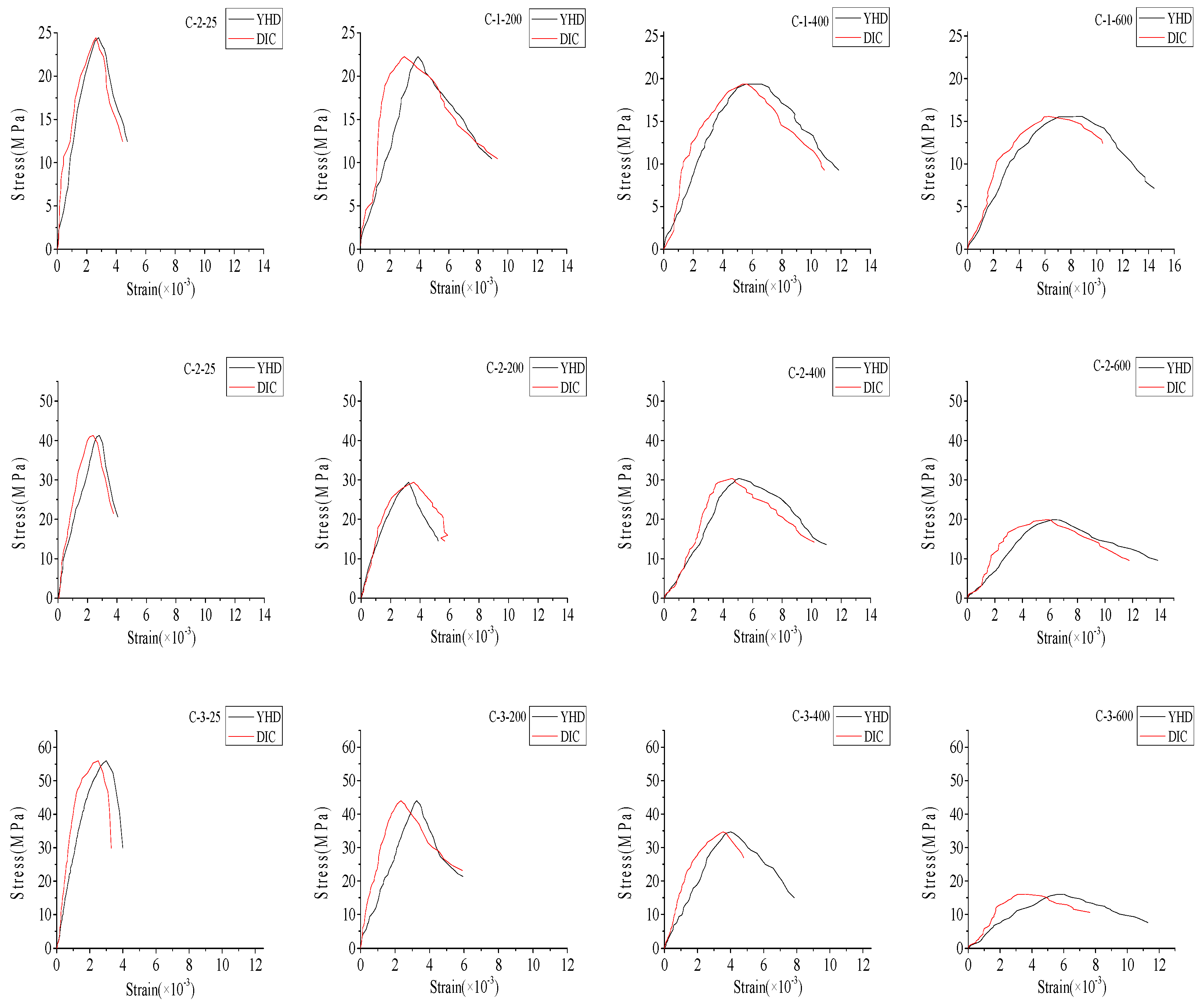
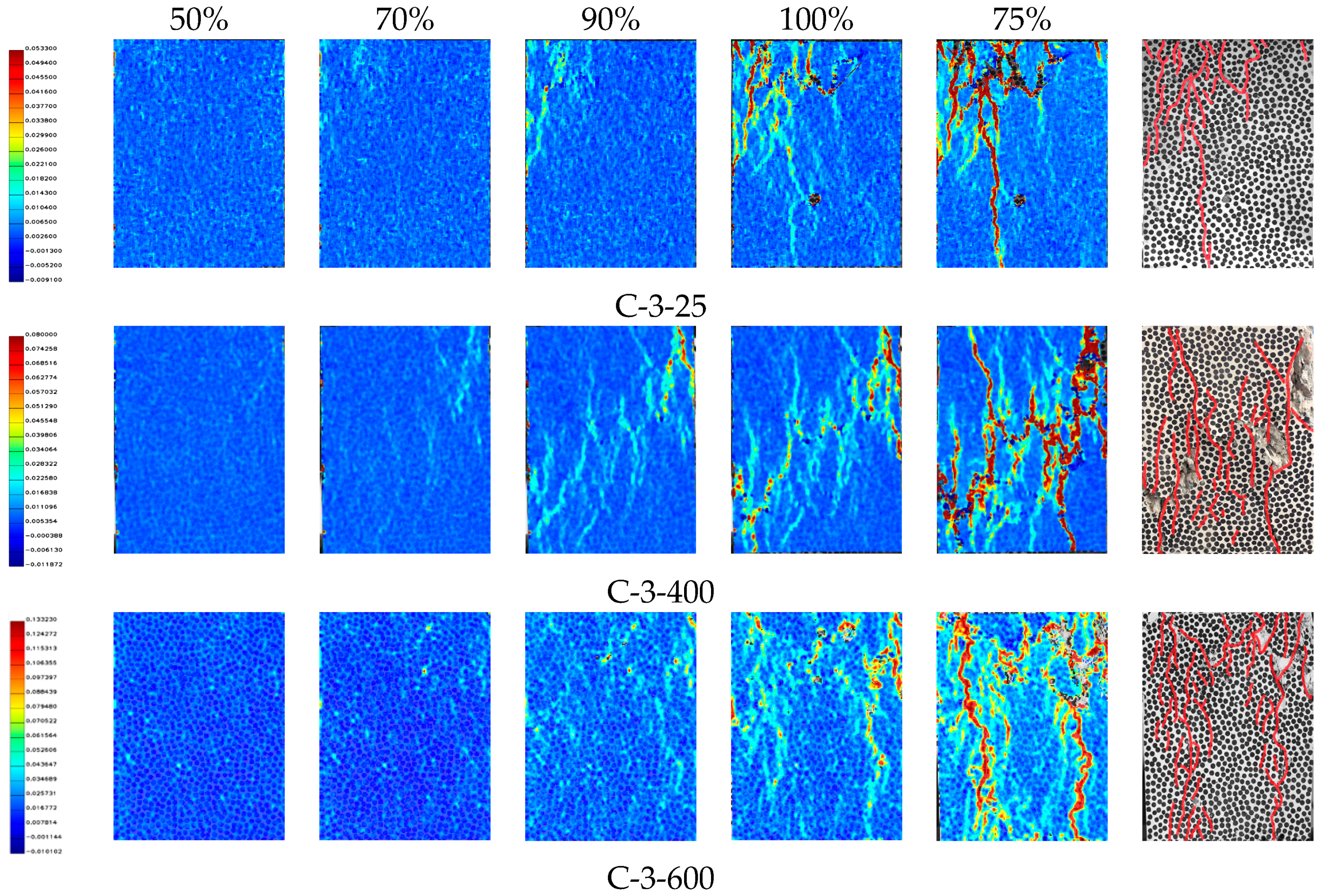
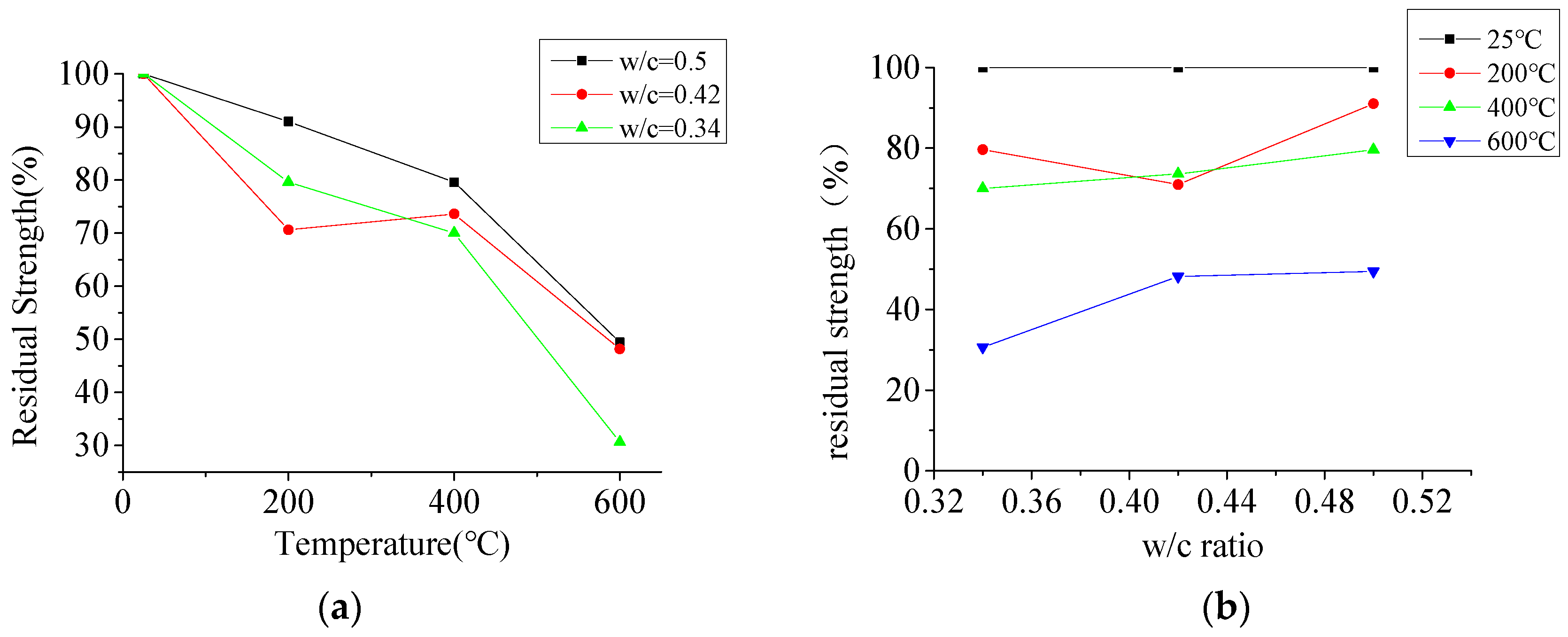

| Group | Specimen | Coarse Aggregate | Sand | Cement | Water–Cement Ratio (w/c) | Exposure Temperature (°C) |
|---|---|---|---|---|---|---|
| C-1 | C-1-25 | 1264 | 542 | 380 | 0.50 | 25 |
| C-1-200 | 1264 | 542 | 380 | 0.50 | 200 | |
| C-1-400 | 1264 | 542 | 380 | 0.50 | 400 | |
| C-1-600 | 1264 | 542 | 380 | 0.50 | 600 | |
| C-2 | C-2-25 | 1242 | 558 | 420 | 0.42 | 25 |
| C-2-200 | 1242 | 558 | 420 | 0.42 | 200 | |
| C-2-400 | 1242 | 558 | 420 | 0.42 | 400 | |
| C-2-600 | 1242 | 558 | 420 | 0.42 | 600 | |
| C-3 | C-3-25 | 1252 | 512 | 460 | 0.34 | 25 |
| C-3-200 | 1252 | 512 | 460 | 0.34 | 200 | |
| C-3-400 | 1252 | 512 | 460 | 0.34 | 400 | |
| C-3-600 | 1252 | 512 | 460 | 0.34 | 600 |
© 2019 by the authors. Licensee MDPI, Basel, Switzerland. This article is an open access article distributed under the terms and conditions of the Creative Commons Attribution (CC BY) license (http://creativecommons.org/licenses/by/4.0/).
Share and Cite
Xiang, S.; Zeng, L.; Zhang, J.; Chen, J.; Liu, Y.; Cheng, G.; Mo, J. A DIC-Based Study on Compressive Responses of Concrete after Exposure to Elevated Temperatures. Materials 2019, 12, 2044. https://doi.org/10.3390/ma12132044
Xiang S, Zeng L, Zhang J, Chen J, Liu Y, Cheng G, Mo J. A DIC-Based Study on Compressive Responses of Concrete after Exposure to Elevated Temperatures. Materials. 2019; 12(13):2044. https://doi.org/10.3390/ma12132044
Chicago/Turabian StyleXiang, Sheng, Lei Zeng, Jicheng Zhang, Juan Chen, Yanhua Liu, Guoyuan Cheng, and Jinxu Mo. 2019. "A DIC-Based Study on Compressive Responses of Concrete after Exposure to Elevated Temperatures" Materials 12, no. 13: 2044. https://doi.org/10.3390/ma12132044
APA StyleXiang, S., Zeng, L., Zhang, J., Chen, J., Liu, Y., Cheng, G., & Mo, J. (2019). A DIC-Based Study on Compressive Responses of Concrete after Exposure to Elevated Temperatures. Materials, 12(13), 2044. https://doi.org/10.3390/ma12132044




